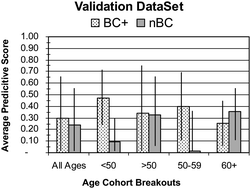Age-stratification's role in cytokine based assay development
Abstract
According to the literature,

* Corresponding authors
a
Provista Life Sciences, 6225 N 24th Street, Suite 150, Phoenix, AZ, USA
E-mail:
information@provistals.com
Fax: +1 602 840 6111
Tel: +1 602 224 5500
According to the literature,

 Please wait while we load your content...
Something went wrong. Try again?
Please wait while we load your content...
Something went wrong. Try again?
D. Weber, R. Grimes, P. Su, R. Woods and P. Baker, Anal. Methods, 2010, 2, 653 DOI: 10.1039/C0AY00038H
To request permission to reproduce material from this article, please go to the Copyright Clearance Center request page.
If you are an author contributing to an RSC publication, you do not need to request permission provided correct acknowledgement is given.
If you are the author of this article, you do not need to request permission to reproduce figures and diagrams provided correct acknowledgement is given. If you want to reproduce the whole article in a third-party publication (excluding your thesis/dissertation for which permission is not required) please go to the Copyright Clearance Center request page.
Read more about how to correctly acknowledge RSC content.
 Fetching data from CrossRef.
Fetching data from CrossRef.
This may take some time to load.
Loading related content
